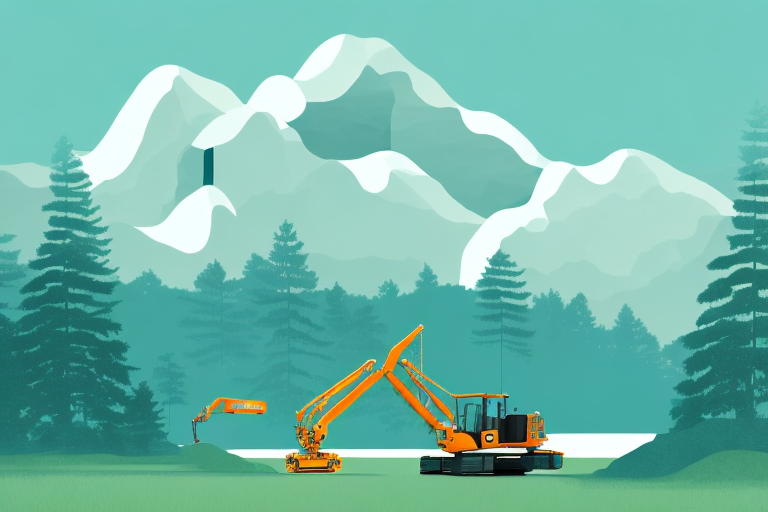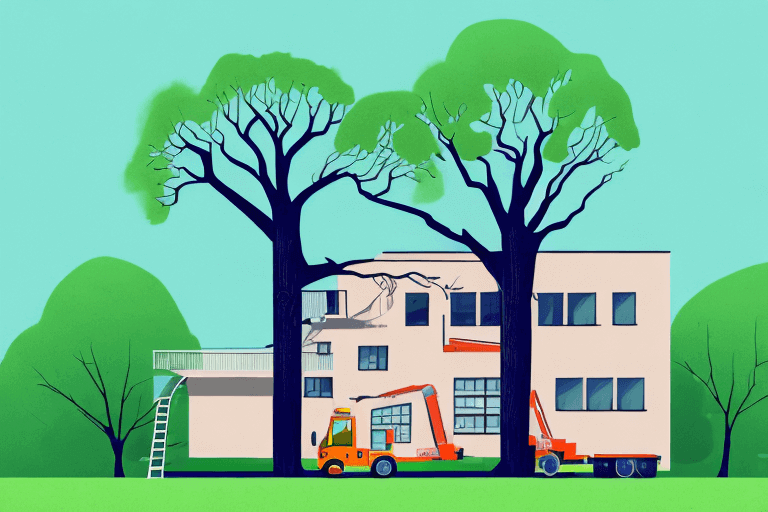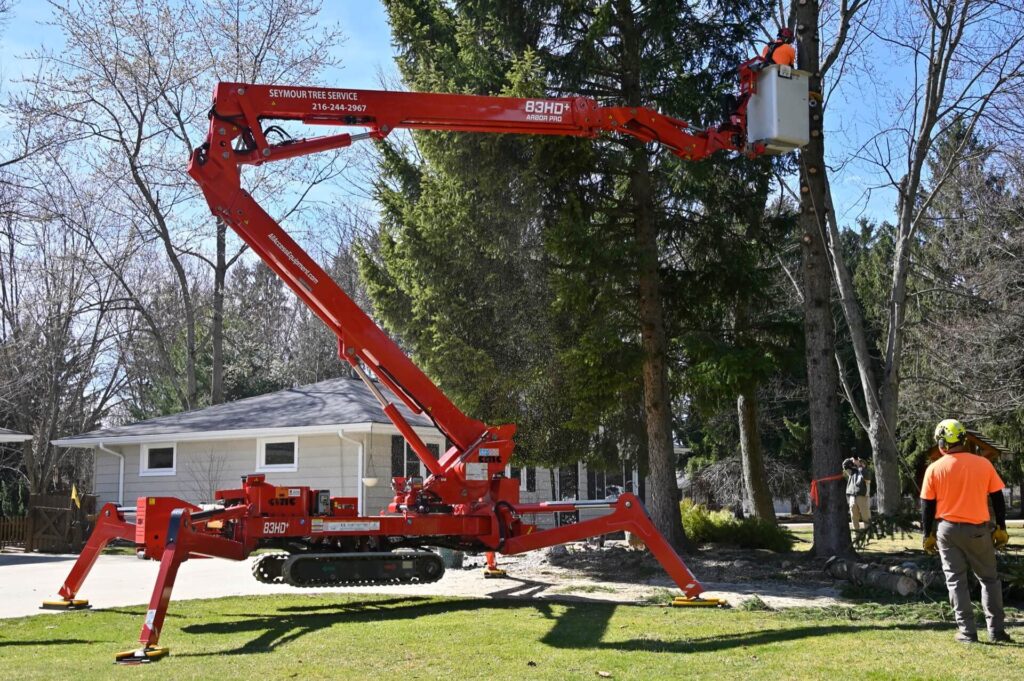Trees are beautiful and provide numerous benefits to our homes and the environment. However, there are times when tree removal becomes necessary. Whether it’s due to the tree being dead, diseased, or posing a threat to property or people, removing a tree is a task that should be handled with caution and expertise. In this ultimate guide, we will provide homeowners with expert tips on safe and efficient tree removal.
Understanding the Basics of Tree Removal
Before diving into the process of tree trimming near me, it’s essential to understand why it may be necessary and the risks involved.
Tree removal is a task that homeowners may need to undertake at some point. Whether it’s due to a dead or diseased tree, structural instability, or interference with power lines or structures, there are various reasons why tree removal becomes necessary.
Identifying the reasons why tree removal is needed will help homeowners make informed decisions regarding the removal process. It’s important to assess the situation carefully and consider the potential risks involved.

Why Tree Removal is Necessary
Tree removal is necessary for several reasons, including:
- The tree is dead or dying.
- The tree is diseased and poses a risk to other trees or plants.
- The tree is damaged and structurally unstable.
- The tree is interfering with power lines, structures, or driveways.
Identifying the reasons why tree removal is needed will help homeowners make informed decisions regarding the removal process. It’s crucial to prioritize safety and take appropriate action when necessary.
Identifying the Risks Involved
Tree removal can be hazardous, especially when it involves large trees or trees in confined spaces. Some of the risks associated with tree removal include:
- Branches falling and causing injury or damage.
- The tree falling in an unintended direction.
- Working at heights and the potential for falls.
- Interaction with electrical wires.
Recognizing these risks is crucial for ensuring the safety of both homeowners and their property during the tree removal process. It’s advisable to hire professional tree removal services that have the expertise and equipment to handle the job safely and efficiently.
The Right Time for Tree Removal
Timing is essential when it comes to tree removal. While some trees may need immediate removal due to safety concerns, others may have specific seasons that are more favorable for removal. For example, removing deciduous trees during their dormant period is often less disruptive to the tree and surrounding plants.
Additionally, homeowners should consider any local regulations or permits required for tree removal before initiating the process. Some areas have specific guidelines or restrictions regarding tree removal, especially for protected or heritage trees. It’s important to comply with these regulations to avoid legal issues and promote responsible environmental practices.
By considering the right time for tree removal and adhering to local regulations, homeowners can ensure a smoother and more efficient process.
Preparing for Tree Removal
Once homeowners have determined that tree removal is necessary, several crucial steps need to be taken to prepare for the actual removal.
Tree removal is not a task to be taken lightly. It requires careful planning and consideration to ensure the safety of both the homeowners and the surrounding property. By following these steps, homeowners can effectively prepare for the tree removal process.
Evaluating the Tree’s Condition
Before attempting any tree removal, it’s important to assess the tree’s condition carefully. This evaluation should include:
- Checking for signs of disease, decay, or pests.
- Assessing the tree’s stability and structural integrity.
- Considering the proximity of the tree to power lines, buildings, and other structures.
By evaluating the tree’s condition, homeowners can determine the appropriate approach to removal and identify any potential challenges that may arise during the process. It is crucial to have a clear understanding of the tree’s health and potential risks before proceeding with removal.

Necessary Tools and Equipment
Tree removal requires specialized tools and equipment to ensure efficiency and safety. Some common tools and equipment include:
- Chainsaw
- Ladder or aerial lift
- Ropes and rigging equipment
- Protective gear, such as helmets, gloves, and safety glasses
Having the necessary tools and equipment readily available will streamline the tree removal process and minimize risks. It is essential to use proper equipment and ensure that it is in good working condition to avoid accidents or delays during the removal process.
Safety Measures to Consider
Prior to tree removal, homeowners should prioritize safety and take the following precautions:
- Inform neighbors and nearby property owners about the tree removal process.
- Establish a clear work zone and keep children and pets away from the area.
- Wear appropriate protective gear and follow safe practices.
- Consider hiring professional arborists for complex or high-risk tree removal.
Tree removal can be a dangerous task, especially for large or challenging trees. It is crucial to take safety measures seriously to prevent accidents or injuries. By informing neighbors, establishing a clear work zone, and wearing protective gear, homeowners can create a safe environment for the tree removal process.
For complex or high-risk tree removal, it is highly recommended to hire professional arborists. These experts have the knowledge, experience, and specialized equipment to handle challenging tree removals safely and efficiently.
In conclusion, preparing for tree removal involves evaluating the tree’s condition, gathering the necessary tools and equipment, and implementing safety measures. By taking these steps, homeowners can ensure a smooth and safe tree removal process. Remember, tree removal should always be approached with caution and, when in doubt, consult with professionals to ensure the best outcome.
Step-by-Step Guide to Tree Removal
Now that homeowners have prepared for tree removal, it’s time to dive into the step-by-step process.
Initial Tree Assessment
The first step in tree removal is to assess the tree and its surroundings. This includes:
- Identifying any obstacles or hazards in the vicinity.
- Determining the direction in which the tree should fall.
- Calculating the height and dimensions of the tree.
By conducting a thorough initial assessment, homeowners can plan the tree removal process more effectively and mitigate potential risks.

Cutting Techniques and Strategies
When it comes to cutting down a tree, there are various techniques and strategies that homeowners can use. Some commonly employed techniques include:
- Straight cut: A simple vertical cut to fell the tree in the desired direction.
- Notch and backcut: Creating a notch on the side of the tree to guide the direction of the fall.
- Hinge cut: Cutting a notch and a hinge on the opposite side of the fall direction to control the tree’s descent.
The cutting technique chosen will depend on factors such as the tree’s size, location, and condition. It’s important to remember that proper cutting techniques are crucial for a safe and controlled tree removal.
Dealing with the Stump
After successfully felling the tree, homeowners will have to deal with the remaining stump. Stump removal can be done through various methods, including:
- Stump grinding: Using a specialized machine to grind the stump into wood chips.
- Chemical stump removal: Applying chemicals to accelerate the natural decomposition process.
- Manual removal: Digging out the stump manually, although this method can be labor-intensive.
Homeowners should choose the most suitable method based on their preferences, the size of the stump, and the resources available.
Hiring Professional Tree Removal Services
While some homeowners may prefer a DIY approach to tree removal, certain situations necessitate professional assistance.
When to Call the Professionals
Homeowners should consider hiring professional tree removal services in the following circumstances:
- The tree is located near power lines or structures.
- The tree is of significant size or requires climbing for removal.
- The tree removal involves complex cutting techniques.
- Homeowners lack the necessary tools, equipment, or experience for safe tree removal.
Professional arborists have the expertise and equipment to handle challenging tree removal situations safely and efficiently.
Choosing the Right Tree Removal Service
When selecting a tree removal service, homeowners should consider several factors, including:
- Experience and qualifications of the tree removal company or arborist.
- Licensing and insurance coverage for any potential damages or liabilities.
- References and testimonials from previous clients.
- Cost estimates and billing practices.
Doing thorough research and making an informed choice will ensure that homeowners receive reliable and professional tree removal services.
Cost and Time Estimates
The cost and time required for tree removal can vary significantly depending on factors such as tree size, location, and complexity. Homeowners should obtain quotes from multiple tree removal services to compare prices and timelines. It’s essential to consider both the financial and time investment required before proceeding with the tree removal process.
With our comprehensive guide, homeowners can approach tree removal with knowledge and confidence. Remember, always prioritize safety and consider seeking professional assistance when necessary. By following expert tips and guidelines, homeowners can accomplish safe and efficient tree removal without compromising their well-being or property.
Related: Why Professional Tree Removal Services are Essential for Property Safety

